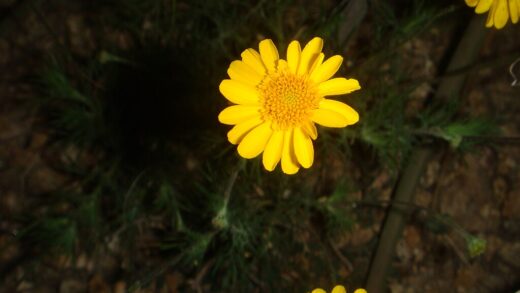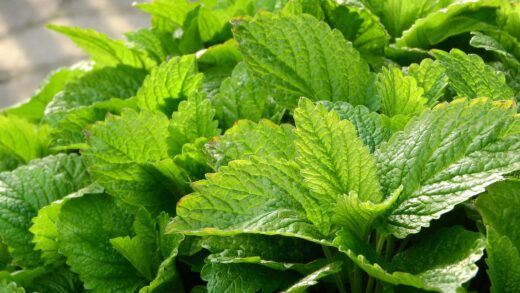Planting and propagating the moss rose

Successfully establishing moss rose in your garden begins with understanding the optimal timing and methods for planting, whether you are starting from seed or young nursery plants. This sun-loving annual thrives in warmth, so it is crucial to wait until all danger of frost has passed in the spring and the soil temperature has risen consistently above 60°F (15°C). Planting too early in cold, damp soil can lead to poor germination, rot, and stunted growth, delaying the vibrant summer display you are anticipating. The foundation of a healthy plant is laid during these initial stages, making careful attention to planting details a worthwhile investment.
The choice between starting from seed and purchasing nursery-grown plants depends on your timeline, budget, and desired level of involvement. Starting from seed is an incredibly cost-effective way to produce a large number of plants, perfect for filling a sizable border or creating a mass planting effect. However, it requires more patience and planning, as you will need to start the seeds indoors about six to eight weeks before your last expected frost date. Conversely, buying bedding plants from a garden center offers instant gratification, providing a significant head start and ensuring you will see blooms much sooner in the season. These young plants are already established and ready to take off as soon as they are placed in a warm, sunny location.
When preparing for planting, the emphasis must be on creating a soil environment that mimics the plant’s native arid habitat. Moss rose abhors “wet feet” and will quickly succumb to root rot if left in poorly draining soil. Therefore, amending heavy clay or rich loam with coarse sand, perlite, or fine gravel is not just recommended; it is essential for long-term success. For container planting, a specialized cactus or succulent potting mix provides the perfect balance of aeration and drainage right out of the bag, simplifying the preparation process considerably.
Propagation of moss rose is a straightforward and rewarding endeavor, offering an easy way to increase your stock or share with fellow gardeners. The plant can be propagated by two primary methods: from seed, which is collected from spent flowers at the end of the season, or from stem cuttings, which can be taken at any point during the growing season. Both methods are highly effective and capitalize on the plant’s vigorous nature. Understanding these simple propagation techniques allows you to perennially enjoy this annual without needing to repurchase it each year.
Starting from seed
Growing moss rose from seed is a popular and economical method that allows gardeners to cultivate a large quantity of plants from a single packet. To get a head start on the growing season, it is best to sow the seeds indoors approximately six to eight weeks before the last anticipated spring frost. The seeds are very fine, almost dust-like, so they should be handled carefully. Sow them on the surface of a sterile seed-starting mix in a shallow tray or pot, and do not cover them with soil, as they require light to germinate. Gently pressing them into the surface is sufficient to ensure good seed-to-soil contact.
More articles on this topic
After sowing, it is crucial to maintain consistent moisture and warmth to encourage germination. Misting the surface of the soil with a spray bottle is the best way to water, as pouring water can easily dislodge the tiny seeds. Covering the seed tray with a clear plastic dome or plastic wrap will help create a humid environment and keep the soil from drying out too quickly. Place the tray in a warm location, ideally around 70-80°F (21-27°C), and provide plenty of bright, indirect light. A sunny windowsill or a spot under grow lights works perfectly. Germination can be expected within one to two weeks under these optimal conditions.
Once the seedlings have emerged and developed their first true leaves, you can remove the plastic cover to improve air circulation and prevent damping-off disease. Continue to provide bright light and keep the soil consistently moist but not waterlogged. When the seedlings have grown to about two inches tall and have several sets of leaves, they can be thinned out or carefully transplanted into individual small pots or cell packs to give them more space to develop a strong root system. This step prevents overcrowding and competition for resources.
Before planting the young moss rose seedlings out in the garden, they must be hardened off. This is a critical process of gradually acclimating them to outdoor conditions over a period of 7 to 10 days. Start by placing them in a sheltered, shady spot for a few hours on the first day, then gradually increase the duration and the amount of direct sun exposure they receive each day. This process toughens up the plants, preventing transplant shock from the sudden change in temperature, sunlight, and wind. Once they are fully hardened off and the threat of frost has passed, they are ready to be planted in their final garden location.
Planting nursery starts
For gardeners seeking immediate color and a less labor-intensive start, purchasing nursery-grown moss rose plants is an excellent option. When selecting plants at the garden center, look for compact, bushy specimens with healthy, green foliage and plenty of unopened flower buds. Avoid plants that appear leggy, yellowed, or have signs of pests or disease, as these may struggle to establish in your garden. Choosing strong, vigorous starts will give you the best foundation for a season-long display of vibrant blooms.
More articles on this topic
Before planting your nursery starts, it is essential to prepare the garden bed or container properly. Choose a location that receives at least six to eight hours of direct sunlight daily and ensure the soil is sandy, gritty, and exceptionally well-draining. If your soil is heavy, work in generous amounts of sand or perlite to improve its structure. When you are ready to plant, dig a hole that is roughly the same depth and slightly wider than the pot the plant came in.
Gently remove the moss rose from its nursery container by turning it upside down and tapping the bottom, supporting the plant with your other hand. If the root ball is dense or compacted, carefully tease the roots apart at the bottom to encourage them to spread out into the new soil. Place the plant in the prepared hole, ensuring that the top of the root ball is level with the surrounding soil surface. Planting it too deep can lead to stem rot.
After positioning the plant, backfill the hole with the amended soil, gently firming it down around the root ball to eliminate any large air pockets. Water the newly planted moss rose thoroughly to help settle the soil and hydrate the roots. Space individual plants about six to nine inches apart to allow them room to spread and to ensure good air circulation, which is important for disease prevention. With proper placement in a sunny spot and well-draining soil, your nursery starts will quickly establish themselves and begin to flower profusely.
Propagation by cuttings
Propagating moss rose from stem cuttings is an incredibly simple and effective way to create new plants during the growing season. This method is perfect for filling in bare spots, starting new containers, or sharing your favorite varieties with friends. The best time to take cuttings is from late spring to mid-summer when the plant is in a state of active growth. Look for healthy, vigorous stems that are not currently flowering, as this will allow the cutting to focus its energy on root development rather than seed production.
To take a cutting, use a clean, sharp pair of scissors or pruning snips to remove a 3- to 4-inch section of stem. Make the cut just below a leaf node, which is the point on the stem where a leaf emerges. Carefully strip the leaves from the lower one to two inches of the cutting. This bare portion of the stem is what will be inserted into the growing medium, and removing the leaves prevents them from rotting underground and introducing disease.
Once the cutting is prepared, you have two options for rooting: in water or directly in soil. While rooting in water is possible, the resulting roots can be brittle and may not transition well to soil. The preferred method is to plant the cutting directly into a moist, well-draining medium. A mix of equal parts perlite and peat moss or a sandy potting soil works perfectly. You can dip the cut end in rooting hormone to speed up the process, but moss rose cuttings often root readily without it.
Insert the bare end of the cutting about an inch deep into the rooting medium and gently firm the soil around it. Place the pot in a location with bright, indirect light and keep the medium consistently moist but not saturated. Roots typically begin to form within one to two weeks. You can check for rooting by giving the cutting a very gentle tug; if you feel resistance, it means roots have developed. Once the cutting is well-rooted and shows signs of new growth, it can be transplanted to its permanent location in the garden or a larger container.
















